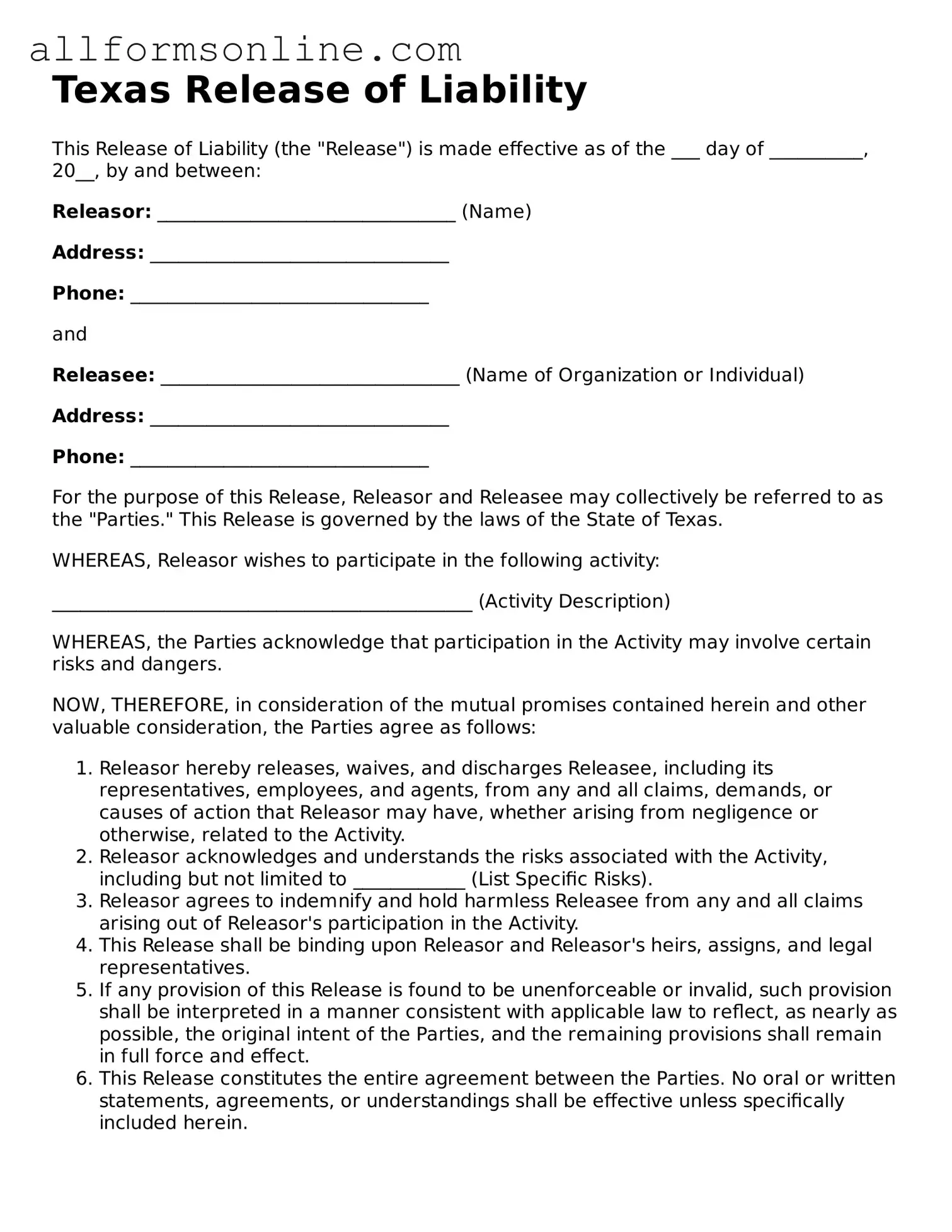What is a Texas Release of Liability form?
A Texas Release of Liability form is a legal document that individuals use to waive their right to hold another party responsible for injuries or damages that may occur during a specific activity. This form is commonly used in recreational activities, sports, and events where there is a risk of injury. By signing this form, participants acknowledge the risks involved and agree not to pursue legal action against the organizer or facility.
Who should use a Release of Liability form?
This form is typically used by businesses, organizations, or individuals hosting activities that carry inherent risks. Examples include sports leagues, fitness classes, outdoor adventure companies, and event organizers. It is also beneficial for participants who want to understand the risks involved in an activity before participating.
Is a Release of Liability form legally binding in Texas?
Yes, a properly drafted and executed Release of Liability form can be legally binding in Texas. However, certain conditions must be met for it to be enforceable. The language of the form must be clear and unambiguous, and it should not violate public policy. Additionally, the individual signing the form must do so voluntarily and with an understanding of what they are agreeing to.
Can a Release of Liability form protect against all types of claims?
No, a Release of Liability form does not provide blanket protection against all claims. While it can protect against negligence claims, it may not be enforceable if gross negligence or willful misconduct is involved. Courts may also refuse to enforce a release if it is deemed unconscionable or if the activity is inherently dangerous.
Do minors need a Release of Liability form?
Yes, minors typically require a Release of Liability form signed by a parent or legal guardian. This ensures that the parent or guardian understands the risks and agrees to waive liability on behalf of the minor. It is important to use clear language and ensure that the form is appropriate for minors to understand.
How should a Release of Liability form be executed?
The form should be signed by all participants before the activity begins. It is advisable to provide participants with sufficient time to read the document and ask questions. Having witnesses or notarization can also strengthen the enforceability of the form, although it is not always necessary.
What should be included in a Texas Release of Liability form?
A comprehensive Release of Liability form should include the names of the parties involved, a clear description of the activity, an acknowledgment of risks, and a statement waiving liability. It may also include a section on indemnification, where participants agree to hold the organizer harmless from any claims arising from the activity. Clear language and specific details will help ensure that the form is effective.
